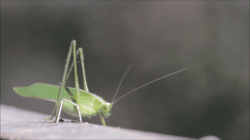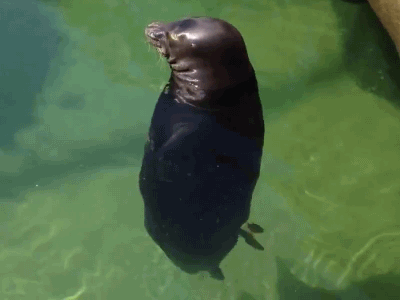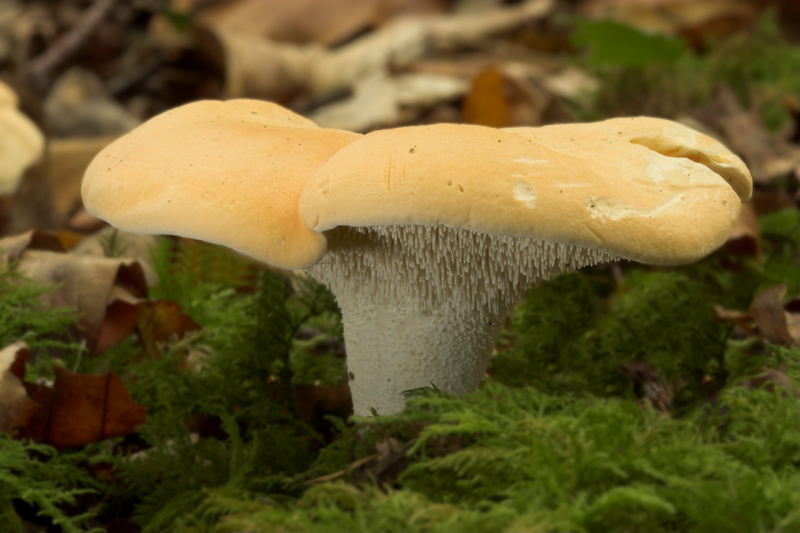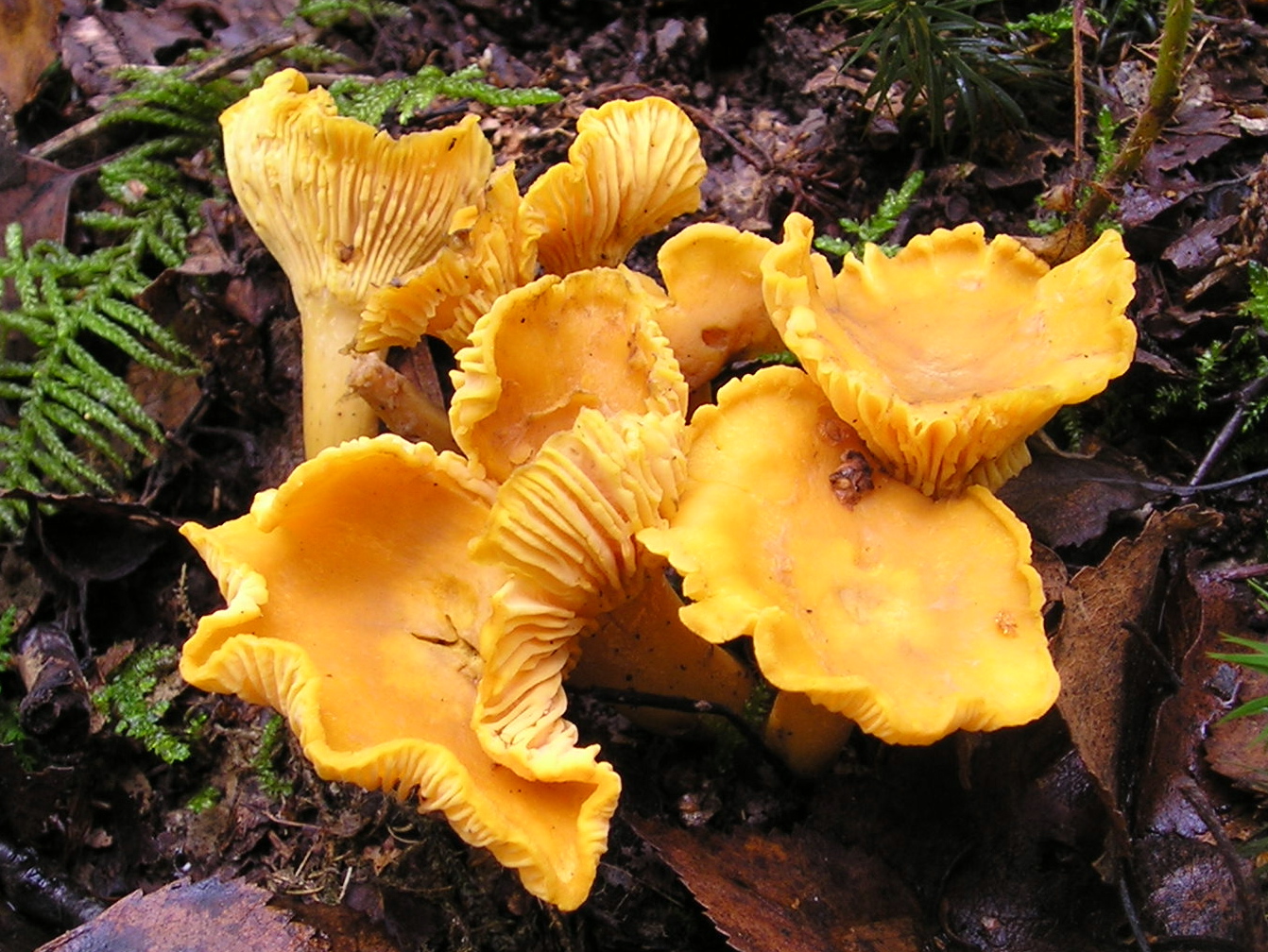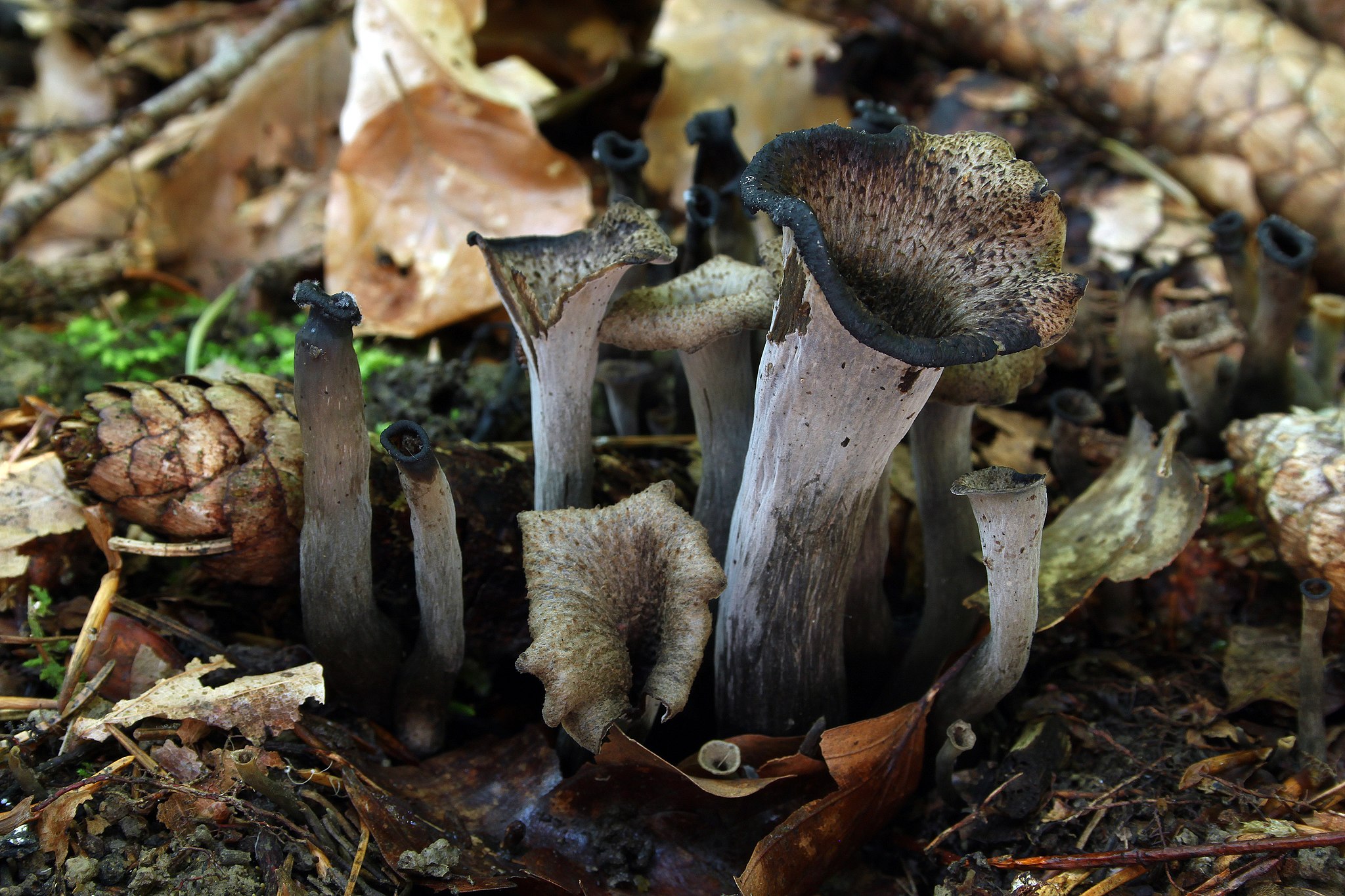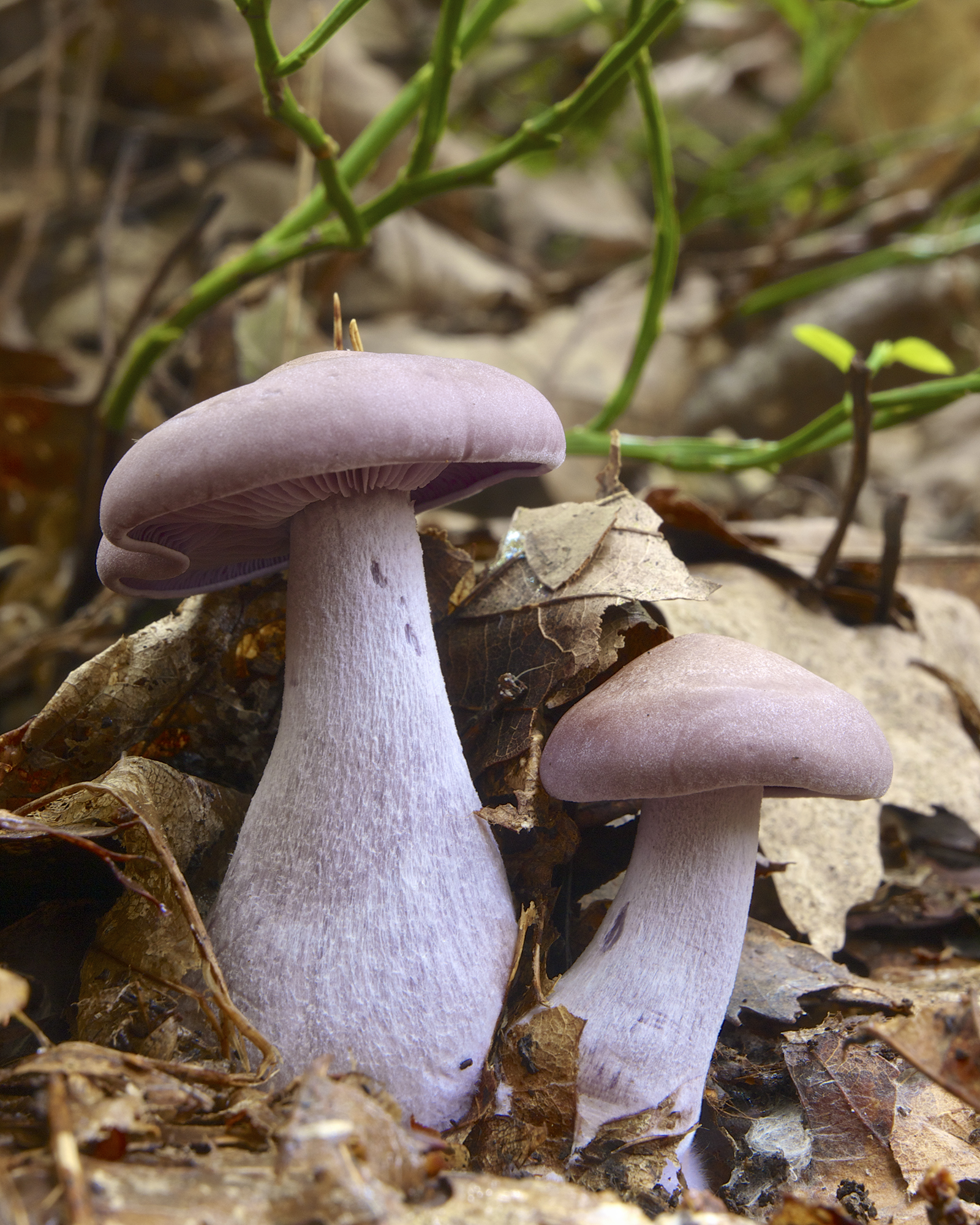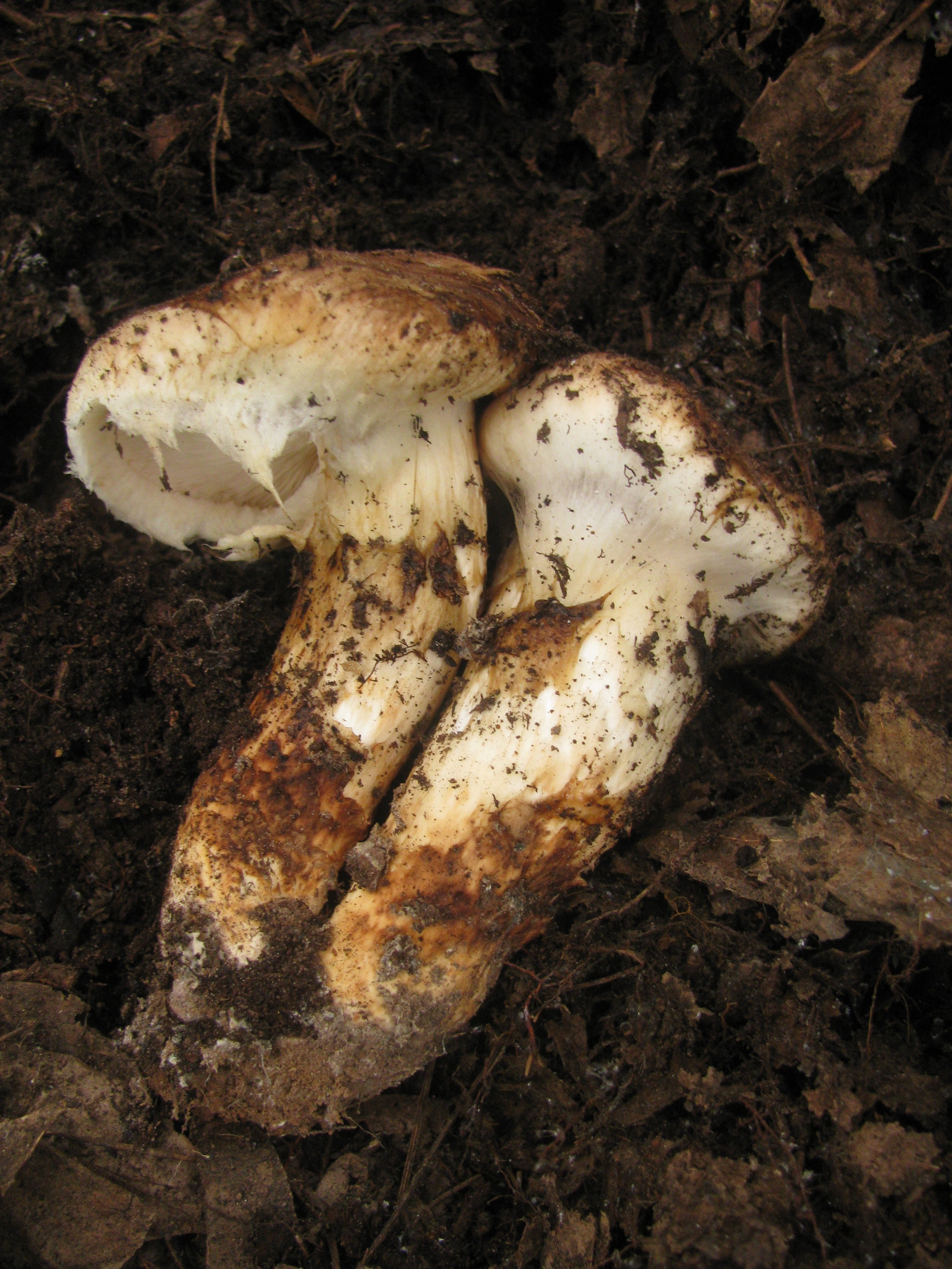Audio Transcript: Vultures inherit the earth
Note: Episodes of Outside/In are made as pieces of audio, and some context and nuance may be lost on the page. Transcripts are generated using a combination of speech recognition software and human transcribers, and may contain errors.
Sam Evans-Brown: [00:00:04] Do you hear any birds now?
Sam Evans-Brown: [00:00:15] Recently I went on two expeditions looking for birds. The first was with a friend of mine, Stu, on the side of New Hampshire's biggest, most famous rock pile, Mount Washington.
Sam Evans-Brown: [00:00:27] It's almost like snipe hunting.
Stu: [00:00:28] Yeah.
Sam Evans-Brown: [00:00:29] We're [00:00:30] going snipe hunting.
Stu: [00:00:32] We're looking for Little Foot, cousin of Bigfoot.
Sam Evans-Brown: [00:00:36] Spot number two, a much smaller hill with two friends of the show, Dave Anderson and Chris Martin, hosts of NHPR's long running nature facts podcast, Something Wild.
Dave Anderson: [00:00:47] These birds live in a stone fortress of granite.
Chris Martin: [00:00:50] Or big hollow logs. That's another place they might know.
Dave Anderson: [00:00:53] Abandoned buildings.
Chris Martin: [00:00:54] Old abandoned buildings in the woods.
Dave Anderson: [00:00:56] And rocky den sites like this.
Sam Evans-Brown: [00:00:58] In the first case on [00:01:00] Mount Washington with Stu.
Stu: [00:01:01] This is great.
Sam Evans-Brown: [00:01:02] We're looking for the Bicknell's thrush.
Stu: [00:01:03] Love the sound of birds in the night.
Sam Evans-Brown: [00:01:05] Yeah. A small, unremarkable songbird. Brown on top, gray with little spots on the belly. In the summer, it's only found in high elevation forests in the northeastern US and southeastern Canada, and there's only about 100,000 of them total. In the second expedition on the little rocky hill with Dave and Chris. We're looking for one of the Western hemisphere's most ubiquitous birds, the turkey vulture.
Dave Anderson: [00:01:29] If they feel trapped, [00:01:30] they will regurgitate on you.
Chris Martin: [00:01:32] Cool.
Dave Anderson: [00:01:33] They hiss. They have a naked head.
Chris Martin: [00:01:35] Do they hiss first?
Dave Anderson: [00:01:36] We'll find out.
Chris Martin: [00:01:37] Okay.
Sam Evans-Brown: [00:01:38] That's why I brought my sunglasses.
Sam Evans-Brown: [00:01:40] Supposedly, Dave knows where one of these majestic scavengers is nesting up on Mount Washington with Stu, as you heard --
Stu: [00:01:48] No.
Sam Evans-Brown: [00:01:48] We struck out, but down lower with Chris and Dave looking for the turkey vulture.
Dave Anderson: [00:01:55] There he is. Whoa! So right now [00:02:00] my adrenaline is redlined. That just scared the crap out of me.
Sam Evans-Brown: [00:02:04] After scrambling up the rocky slope, we spooked a fully grown turkey vulture. Six feet of silent black wings, a wrinkly, bald pink head out of its nest, a she or he spent the next 15 minutes flying in high, lazy circles above us.
Chris Martin: [00:02:22] The other one is probably out gathering food right now. I wouldn't expect it to be in here guarding the young. If there are young, which [00:02:30] I should be.
Sam Evans-Brown: [00:02:31] Would they be eggs or chicks?
Chris Martin: [00:02:32] There could be eggs. But at this time of year, June, they're probably chicks. But it's hard to say until somebody takes a look.
Dave Anderson: [00:02:38] 1 or 2.
Chris Martin: [00:02:39] Can we go closer?
Dave Anderson: [00:02:41] Oh, we're going in.
Chris Martin: [00:02:41] I'm going closer.
Dave Anderson: [00:02:43] I'll follow.
Sam Evans-Brown: [00:02:44] The nest is not really a nest. It's just a crevice in a field of boulders. And actually, what Chris and Dave did was send in the guy with the microphone first.
Sam Evans-Brown: [00:02:56] The entrance was too small to stand or to crouch, so I had to sort [00:03:00] of slither in on my belly.
Sam Evans-Brown: [00:03:02] Oh my gosh.
Sam Evans-Brown: [00:03:03] By the way, we cleared this with Chris, who is a biologist with the Audubon Society.
Sam Evans-Brown: [00:03:07] So how Chris, how close can I get before I'm being problematic?
Sam Evans-Brown: [00:03:11] And right there, just a few feet from the entrance, two fluffy little turkey vulture chicks.
Sam Evans-Brown: [00:03:19] Oh my gosh, they're tiny.
Sam Evans-Brown: [00:03:28] So two [00:03:30] bird chasing excursions, one for the rare and difficult to spot Bicknell's thrush, which ended in failure. The second, poking around in craggy corners for turkey vultures: a success. These two birds, the turkey vultures that we found, and the Bicknell's thrush that we didn't, they're representative of a trend that's underway right under your nose.
Katie Fallon: [00:03:55] Oh, I think turkey vultures are just about a perfect creature. They are a bird [00:04:00] that can be seen by almost everyone in the hemisphere.
Chris Rimmer: [00:04:04] The Bicknell's pigeonhole themselves into a pretty narrow ecological niche. And if these habitats disappear from our mountaintops, I don't think the birds are going to just find a different place to go.
Sam Evans-Brown: [00:04:28] This is Outside/In, a show [00:04:30] about the natural world and how we use it. I'm Sam Evans-Brown. Today, it's the tale of two birds, one the turkey vulture, almost universally reviled, but they're also pretty amazing in their own way. The other, the Bicknell's thrush, is a local celebrity, the target of research dollars and enthusiastic birdwatchers. But it's in a tight spot, literally and figuratively. And the story of these two birds actually tells us the story about our world [00:05:00] as a whole. It tells us where we're headed toward a world of songbirds and high alpine gardens, or toward a world in which turkey vultures inherit the Earth.
Sam Evans-Brown: [00:05:25] Okay. Right here at the top, I want to introduce you to an idea. You know how natural selection works. [00:05:30] Random mutations make individuals that are slightly different, slightly more able to succeed. All that. Now, one thing this does is the longer a species hangs out in a specific place, the better and better it gets at living in that place. They become really incredibly good at finding food and surviving much better than species that range more widely and live in many different places. This is called specialization, and as long as habitats are not [00:06:00] changing very much, it's the logical conclusion of natural selection. So now that you know that natural selection drives toward specialization, let's take a look at the Bicknell's thrush, starting with the guy who discovered it.
Chris Rimmer: [00:06:17] On June 15th, 1881. Believe it or not, I know the exact date.
Sam Evans-Brown: [00:06:22] That's wildlife biologist Chris Rimmer. He's basically the world's expert on these birds.
Chris Rimmer: [00:06:27] An amateur ornithologist named Eugene [00:06:30] P. Bicknell was hiking around on Slide Mountain in the Catskills of New York.
Sam Evans-Brown: [00:06:37] Hiking around and sees a bird that he doesn't recognize. It's a thrush that he doesn't recognize, and that was unusual for him.
Chris Rimmer: [00:06:44] So, as ornithologists did in those days, he pulled out his shotgun.
Sam Evans-Brown: [00:06:49] And he collected the bird. Just in case you didn't know this Audubon, like James Audubon that the bird society was named for, also [00:07:00] shot a ton of birds. Bicknell shot two of them and picked them up.
Chris Rimmer: [00:07:05] Examined them in his hand, still didn't recognize him, and thereupon sent them down to the Smithsonian, where they were identified as a new subspecies, or race of the gray cheeked thrush, which is a much more northern and widely distributed bird.
Sam Evans-Brown: [00:07:22] Case closed. Right? Well, fast forward 100 years. In [00:07:30] the 1990s, along comes this Canadian biologist.
Chris Rimmer: [00:07:33] A taxonomist zoogeographer named Henri Ouelett. He worked for the National Museum of Canada in Ottawa.
Sam Evans-Brown: [00:07:39] Something about the Bicknell's gray cheeked thrush thing didn't quite sit right with him, so he gets to work.
Chris Rimmer: [00:07:46] So he examined specimens in museums, finds.
Sam Evans-Brown: [00:07:50] Very slight differences in the feathers and body sizes. He then listens to them singing.
Chris Rimmer: [00:07:56] The songs of the two species, which are slightly different.
Sam Evans-Brown: [00:07:59] And if you played the song [00:08:00] of the one species. So that the other could hear it, they just didn't react. Which is weird.
Chris Rimmer: [00:08:11] Because if you play the song of a, let's say, a song sparrow or a robin to another robin, usually they're going to react because they think there's an intruder on their territory. They got to drive it out, right?
Sam Evans-Brown: [00:08:22] And then comes the most important bit of evidence.
Chris Rimmer: [00:08:25] The final nail in the coffin.
Sam Evans-Brown: [00:08:27] He tested their DNA and found that they were different enough [00:08:30] that probably the two species stopped breeding together around a million years ago. So he writes all this up in a paper, brings it to the authorities.
Chris Rimmer: [00:08:39] The sort of god squad of ornithological taxonomy, the American Ornithologists Union Checklist Committee, and they accepted it. And so in 1995 the switch was made. Bicknell's went from being a subspecies of gray cheek to being [00:09:00] its own distinct species.
Sam Evans-Brown: [00:09:06] Let me just be clear about what this is. This is a small population of birds that a million years ago, started living further south than its former compatriots because they've now become separated. The two populations stop breeding with each other. But this happened relatively recently in evolutionary terms, so there haven't been enough random mutations [00:09:30] to make them actually look different.
Chris Rimmer: [00:09:32] You can't tell them apart. People say they can. I don't believe it.
Sam Evans-Brown: [00:09:35] But science tells us they're different enough to be a new species, though. A new species that is almost indistinguishable from the old one. And there is nothing that birders love more than a new species.
Nate Launer: [00:09:46] So we're doing a 20 minute surveys at each point.
Sam Evans-Brown: [00:09:50] This means people care enough about them to design a study to keep track of them, called Mountain Birdwatch.
Nate Launer: [00:09:57] And I can still hear that Winter Wren. He's really far away.
Sam Evans-Brown: [00:09:59] And [00:10:00] that's why we're on the side of Mount Washington at the beginning of the story. Every year, a bunch of volunteers and a few college students paid by Chris Rimmer's organization, the Vermont Center for Ecostudies, go up and very carefully, very scientifically count birds. That first one you heard was Nate Launer. And here's another Kirsti Carr.
Kirsti Carr: [00:10:20] What I think is so cool is that it's endemic to the northeast and...
Sam Evans-Brown: [00:10:26] It's like, it's our bird.
Kirsti Carr: [00:10:28] It's our bird, and it's, you [00:10:30] know, it's globally rare and it travels all the way down to the Caribbean area, you know, to like the island of Hispaniola, I guess, is a place where it overwinters the most.
Sam Evans-Brown: [00:10:48] So, you see, in the summer when they're breeding, Bicknell's thrush only lives in high altitude forests in the northeast of the US and the southeast of Canada. And then in the winter, they fly south. And some [00:11:00] crazy number, maybe as much as 90% of them spend the winter on Hispaniola. Mostly in the Dominican Republic. Just think how crazy that is. There are lots of big islands down there Cuba, Puerto Rico, Jamaica. But the thrushes are picky and the vast majority of them go to this one 30,000 square mile island. This bird is a specialist. It can survive in just one kind of habitat. [00:11:30] There are lots of specialists out there. Koalas, for example, can only eat eucalyptus leaves. Piping plovers can only nest on sparsely vegetated beaches. The monarch butterfly caterpillar can only feed on milkweed leaves. The Bicknell's thrush is like those more famous specialists. The Cornell Lab of Ornithology says it has one of the most restricted breeding and wintering ranges of any North American bird. If anything goes wrong in the places it lives, it's got [00:12:00] nowhere else to go. Now, in contrast, allow me to reintroduce you to:
Katie Fallon: [00:12:14] Turkey vultures are just amazing in that they can eat disease and neutralize it.
Sam Evans-Brown: [00:12:21] The turkey vulture.
Katie Fallon: [00:12:25] Turkey vultures can eat things like an animal that has died from anthrax. [00:12:30] They can also eat an animal that's died of botulism toxin or cholera. The turkey vulture can eat it, and it doesn't affect the turkey vulture in any negative way.
Sam Evans-Brown: [00:12:41] Our turkey vulture enthusiasts, by the by, is Katie Fallon, who wrote Vulture: The Private Life of an Unloved Bird.
Katie Fallon: [00:12:48] I actually went, had a few other possible subtitles for the book. One was Vulture: Eat Your Heart Out and another one was Vulture: Happy Entrails to you.
Sam Evans-Brown: [00:12:59] Oh man. [00:13:00]
Sam Evans-Brown: [00:13:01] The crux of Katie's book is that turkey vultures deserve some cred here for cleaning up after us.
Katie Fallon: [00:13:07] We unfortunately aren't as fond of these birds as I think we should be because of the great service they provide.
Sam Evans-Brown: [00:13:13] Most of what makes turkey vultures so amazing is how incredibly well adapted to eating dead things they are. But since that's gross, I'm going to intersperse gross but cool turkey vulture facts with some straight up cool turkey vulture facts here. So [00:13:30] turkey vulture stomach acid is roughly ten times more acidic than human stomach acid, which means by the time it gets to the other end, their waste is both clean and very acidic. So as a strategy, they deposit it all over their legs.
Katie Fallon: [00:13:47] That helps cool them off if it's hot. But we also think that that liquid waste acts as a sanitizer and it kills bacteria that might be on their feet from standing on a carcass. So it's sort of like they carry [00:14:00] their hand sanitizer with them, right?
Sam Evans-Brown: [00:14:03] Gross. But cool. Straight up cool. You know how you see them soaring all the time, lazily tipping their wings back and forth in the hot air?
Katie Fallon: [00:14:14] Yeah, they can soar for a long period of time. They've done some studies where they've put implants in Turkey vultures to monitor their heart rate and their respiration rates, and they found that when a turkey vulture is soaring, it's it's [00:14:30] a heart rate is about the same as when it's asleep.
Sam Evans-Brown: [00:14:35] That's amazing!.
Katie Fallon: [00:14:36] Pretty amazing!
Sam Evans-Brown: [00:14:37] Yeah! My heart rate goes up if if I'm sitting in a chair versus lying in a bed.
Sam Evans-Brown: [00:14:41] Okay, okay, okay. Just a couple more. Gross/Cool: Turkey vulture heads are bald so they won't get rotting meat chunks stuck to feathers when they're jamming them into carcasses. Regular old cool: Even though most birds can't really smell at all. Turkey vultures noses are so good that in one case study, a bunch of farmers were shooting and burying ground hogs, only [00:15:00] to find them dug up and eaten the next day.
Katie Fallon: [00:15:02] They have documented them being able to smell something like a dead rat underneath leaves in a forest, and they've also documented turkey vultures actually digging up carcasses that have been intentionally buried.
Sam Evans-Brown: [00:15:15] And all of these various evolutionary talents add up to an extremely successful bird.
Katie Fallon: [00:15:22] They breed from south-central Canada throughout most of North America, Central America, and all [00:15:30] of South America. They're even on islands. Caribbean islands. The Falkland Islands has turkey vultures. They are a bird that can be seen by almost everyone in the hemisphere. Oh, I think turkey vultures are just about a perfect creature.
Sam Evans-Brown: [00:15:54] So, they're like an amazing generalist.
Katie Fallon: [00:15:56] Yes they are, they are an amazing generalist. Exactly.
Sam Evans-Brown: [00:16:02] A [00:16:00] generalist. They're thriving everywhere. They can nest in a rocky talus slope or in an abandoned warehouse. They don't need a very specific set of ecological conditions in order to survive. They take what they've got and they work with it. There are lots of these cockroaches, rats, ravens, raccoons and jellyfish. Quite often, generalists do a good job living alongside humans. [00:16:30] I mean, if you think about it, we're really the most obvious example of a generalist. So we've got one very rare bird that needs a very specific habitat to survive, and another that can live almost everywhere. Now, you've probably heard this part of the story already. Species are disappearing. Many scientists believe we're in the midst of something that will eventually be recognized [00:17:00] as a mass extinction event. And those extinctions, they're coming for the specialists first.
Roman Julliard: [00:17:07] Yeah. So I'm Roman Julliard. I'm working at the National Museum for Natural History in Paris.
Sam Evans-Brown: [00:17:14] This is Roman Julliard, who came up with a way to mathematically define what a specialist species is.
Roman Julliard: [00:17:20] Since the beginning of our survey, which is now 25 years old, that's on average special species population size [00:17:30] have decreased by 20%.
Sam Evans-Brown: [00:17:32] But this is the story you've heard already. The other half of the story is that specialists are being replaced by generalists.
Roman Julliard: [00:17:41] And it's almost balanced by the increase in population size of generalist species.
Sam Evans-Brown: [00:17:47] Almost balanced. So while specialists are declining, generalist species are growing. Now, Roman studies birds. And we have been talking about birds. But this is not just a bird [00:18:00] thing.
Roman Julliard: [00:18:00] There's really a striking common pattern that specialist species are declining in everywhere.
Sam Evans-Brown: [00:18:06] So all around the world.
Roman Julliard: [00:18:08] And it was true in coral fish, marsupials in Australia...
Sam Evans-Brown: [00:18:15] The Bicknell's thrushes and species like them...
Roman Julliard: [00:18:17] And bumblebees in, in the UK and...
Sam Evans-Brown: [00:18:20] ...are struggling.
Roman Julliard: [00:18:21] Yeah and some plants also.
Sam Evans-Brown: [00:18:23] And the turkey vultures, the generalists, are doing better. They're actually getting more numerous. [00:18:30] Just one particularly terrifying example. A few years ago, the first study ever to try to estimate global jellyfish populations came out, and it found that in 60% of the world's oceans, jellies are on the rise. The headlines that followed jellyfish are taking over the oceans. We're headed toward a jellyfish world. What's [00:19:00] the deal? Well, it's really not a surprise.
Roman Julliard: [00:19:04] Well, it's most likely a habitat degradation. I mean, it's the most parsimonious explanation.
Sam Evans-Brown: [00:19:13] The most parsimonious explanation. If you only know how to live in one place, and that place is changing because of logging or invasive plants or increased forest fires, or not enough forest fires or whatever the problem is locally, you're in a tough spot. And that's the story with our bird, too. [00:19:30]
Yolanda León: [00:19:30] No matter how much it's done in North America, if in the wintering range and there there are no, no changes, it's it's it's a bottleneck.
Sam Evans-Brown: [00:19:42] This is Yolanda León, executive director of Grupo Jaragua, a conservation organization down in the Dominican Republic. While we snooty New Englanders think of the Bicknell's thrush as our bird, it spends half the year in the Caribbean, too. Nearly all of the population spends the winter [00:20:00] on a single island, and a lot of them are in a single place right now.
Yolanda León: [00:20:05] Most of the habitat for many of these mountain birds and other species is in Sierra de Bahoruco.
Sam Evans-Brown: [00:20:13] The Sierra de Bahoruco is a mountain range on the border with Haiti. It's also a national park, the biggest in the Dominican Republic.
Yolanda León: [00:20:20] And you would think because it's a national park, it's it's protected and the birds are safe there. However, [00:20:30] what we found out was that there was a lot of agriculture going on inside the park. This is all illegal agriculture.
Sam Evans-Brown: [00:20:39] This is what's called a paper park. The government declared it off limits, but its borders aren't marked or enforced. So over time, people have started to cut down trees and grow crops. In particular, wealthy farmers have started to grow avocados.
Yolanda León: [00:20:54] And these are export avocados.
Sam Evans-Brown: [00:20:56] So this is like this is like Chipotle, you know, [00:21:00] all the, all the guacamole that we love.
Yolanda León: [00:21:03] Yes, yes. And you know I love avocados, ad people say, it's like: you're opposed to avocado! I love avocado, but avocados don't have to be produced in a national park.
Sam Evans-Brown: [00:21:14] A quick aside: apparently most of the Dominican Republic's avocados go to Europe, not to Chipotle. And let me just put a big old disclaimer here. National parks in developing economies is a complicated, fraught topic. Some subsistence farmers actually work in this park and [00:21:30] had it declared right on top of them. And others are folks who genuinely didn't know the park was here because, you know, it's just on paper.
Yolanda León: [00:21:37] Like, with the avocado and the farming, there are big players and small players, and I think chasing after the small players, the poorest people is not the best solution. And it's not it's not very fair.
Sam Evans-Brown: [00:21:50] But after all caveats about the problems with how Western-style conservation is executed in the developing world, it's pretty easy to recognize that this isn't a good situation [00:22:00] for our bird.
Yolanda León: [00:22:01] On the north side of Bahoruco, we do have a good area that seems to be off limits because of of road access, and I think that area is pretty safe. But on the south side of Bahoruco, if nothing is done in the next 2 to 5 years and we, we are not going to have any more of the the birds or any of its fauna.
Sam Evans-Brown: [00:22:33] Habitat [00:22:30] degradation a specialist's worst nightmare. And it's happening up on the north end of their range, too.
Chris Rimmer: [00:22:40] Yeah, it's absolutely it's one of the most vulnerable habitat types in the northeast.
Sam Evans-Brown: [00:22:46] Here's Chris Rimmer again. Remember, in the summer, Bicknell's thrush live in a specific type of forest up on the sides and tops of mountains.
Chris Rimmer: [00:22:56] These forests are predicted to begin getting [00:23:00] pushed up slope by warming temperatures. And if these habitats disappear from our mountain tops, I don't think the birds are going to just find a different place to go. They've pigeonholed themselves into a pretty narrow ecological niche.
Sam Evans-Brown: [00:23:13] Meanwhile, turkey vultures, they're thriving.
Katie Fallon: [00:23:16] 25 years ago, we thought there were about 5 million turkey vultures.
Sam Evans-Brown: [00:23:21] Since then, we've made more roads which mean more roadkill and also more hot air updrafts to surf along. There's also less shooting [00:23:30] and poisoning of vultures going on, and warmer winters probably are better for them, too. Less frozen meat. So today -
Katie Fallon: [00:23:38] And the most recent estimates that I've read are, you know, we might have as many as 20 million turkey vultures worldwide.
Sam Evans-Brown: [00:23:51] This is the trajectory we're on. The beautiful, finely tuned specialists. Hyper efficient little motors built to extract [00:24:00] calories from their own very, very specific habitats are on their way out. And as they vanish, the perhaps equally beautiful in their own way, generalists are rising to fill the space that's left behind. You can already see the same starlings and house sparrows and pigeons, and almost any city anywhere in the world. In my mind, there's this nightmare scenario where the skies [00:24:30] are full of nothing but turkey vultures. The forests and the cities are full of skunks and raccoons, and the oceans are populated entirely by jellyfish. It's the stuff of dystopian novels. It's the jellyfish world.
Roman Julliard: [00:24:54] So I don't think we'll I mean, we really need to work hard [00:25:00] to have the nightmare scenario.
Sam Evans-Brown: [00:25:03] Ah. A reminder from Roman Julliard. Remember where specialization comes from. In stable environments, specialists actually do better than generalists.
Roman Julliard: [00:25:13] You need really a very high pressure to maintain these homogenization.
Sam Evans-Brown: [00:25:17] Specialists are just better than generalists at getting food in their very special niche.
Roman Julliard: [00:25:22] If you relax a bit, evolution is really a force that drives to specialization in a differentiation. [00:25:30]
Sam Evans-Brown: [00:25:30] So if we stop doing all the things that we're doing that make life hard on them and the habitats stabilize, the specialists will start to thrive again. And given enough time, we'll even get new specialist species. The problem today is environments are changing faster than evolution can change the animals. Really, if you set your frame of reference long enough, thousands of years, even millions of years, there's very little that the earth can't [00:26:00] recover from.
Roman Julliard: [00:26:01] So I think we I mean, we should still be optimistic, and, uh...
Sam Evans-Brown: [00:26:05] So, so are you. Are you optimistic then?
Roman Julliard: [00:26:11] There's no objective reason to be optimistic because the the pattern is still the decrease wherever you look at. But it's still reversible. That's the, the point.
Sam Evans-Brown: [00:26:24] That was a very scientific answer.
Roman Julliard: [00:26:25] Yeah.
Sam Evans-Brown: [00:26:39] No [00:26:30] objective reason to be optimistic, but maybe we should try anyway. Pretty much my motto going through life. Outside/I [00:27:00]n was produced this week by me, Sam Evans-Brown, with help from Hannah McCarthy, Taylor Quimby, Jimmy Gutierrez, Ben Henry, and Maureen McMurray. Music from this week's episode came to us from oaddington Bear, Blue Dot Sessions, David Zest, Jason Leonard, and Ikimasoo Aoi. If you've got a second, head online to check out our website [00:27:30] outsideinradio.org. We've got photos of the tiny turkey vulture chicks and the crevice that I had to crawl into in order to see them. We'll be posting them on social media too @Outsideinradio. Our theme music is by Breakmaster Cylinder. Outside/In is a production of New Hampshire Public Radio.








